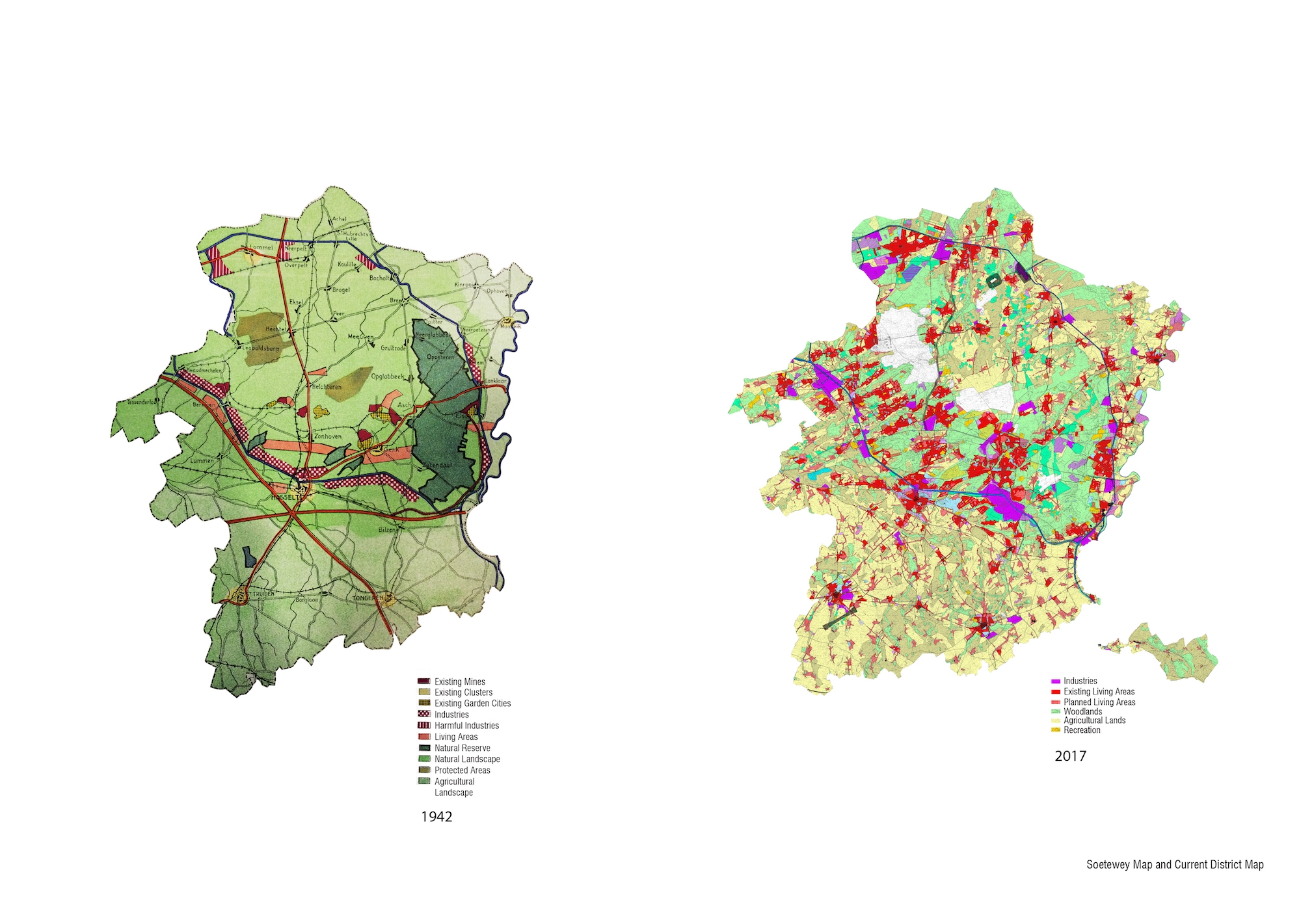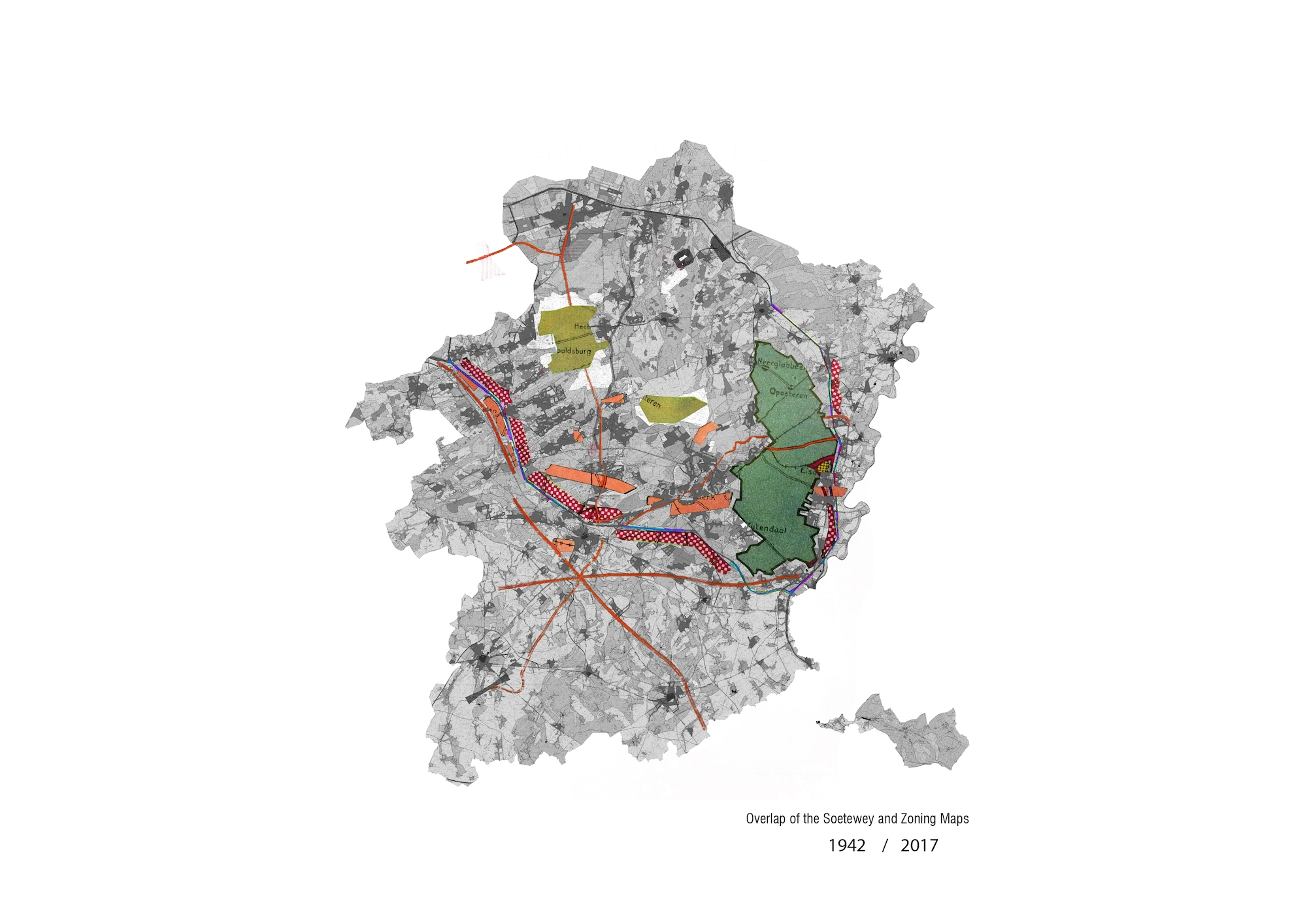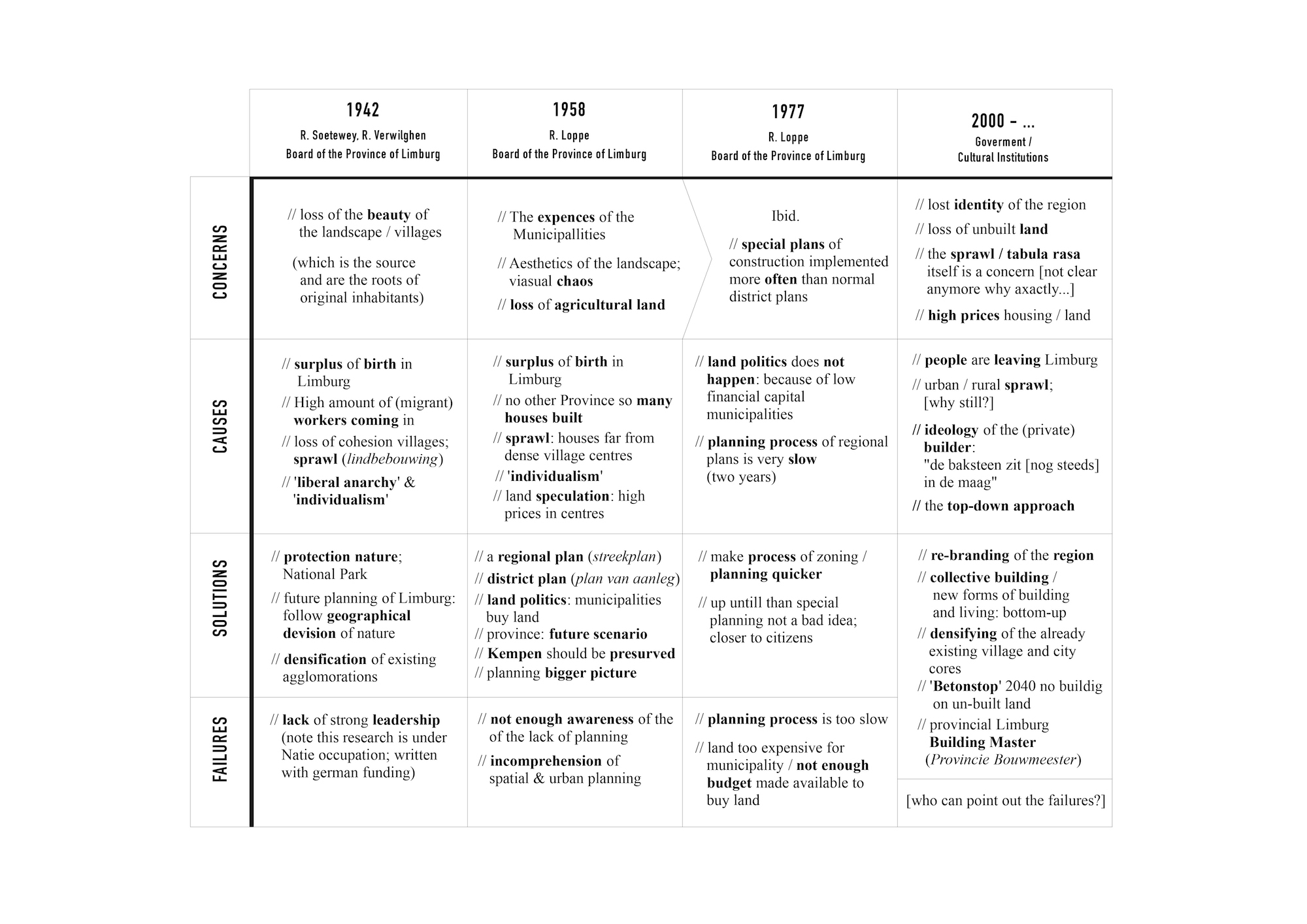'The Endless Sprawl,
A History of Urban and Spatial Planning in Limburg’
2017
Historical urban development research
In collaboration with: Charles-Olivier Rocray
Master Studio: Living along the Edge of the Hoge Kempen National Park
Master of architecture KU Leuven, Brussels
Studio by: Martino Tattara
In the recent years we can distinguish an ongoing debate within the cultural institutions of the Province of Limburg, Belgium. The urban and spatial planning of Limburg, or rather the lack of it, is being investigated and criticized. The current focus is pointed towards the low-density sprawl of settlements and singular housing, together with the environmental and cultural problems correlating with it. Also, on a broader level, the issue of urban low-density sprawl is raised high on the agenda, while the Flemish government recently came to an agreement on the ‘Betonstop’ regulation (building stop) in 2040. Looking back towards Limburg’s planning history, it is remarkable to read that in a 1942 publication by politician Ir. R Verwilghen and urban planner R. Soetewey, the problem of the housing sprawl was already radically formulated. Moreover, the preference that Verwilghen and Soetewey had for a densification of the existing agglomerations did not leave the planning debate after the 2nd World War.
In spite of an ongoing and reoccurring criticism of the dispersed and unregulated building activities of Limburg, the building pattern did not seem to have changed over the years. Why, over decades of time, did the planning debate and built reality not overlap? In an attempt to answer these questions, we are taking a closer look at the current and historical political structure of Limburg, and its building / planning regulations, following with an investigation on the living traditions and building desires of the private builder in Flanders, and more specifically in Limburg. We might come to a conclusion that political bureaucracy is not the best, nor the only way to realize the implementation of planning directions posed by the intellectual debate. Changing the mindset of the Flemish builder might be a more effective solution?



Following this research a design proposal was made to densify the Limburg Garden City of Eisden. To view 'Common Territory' click here